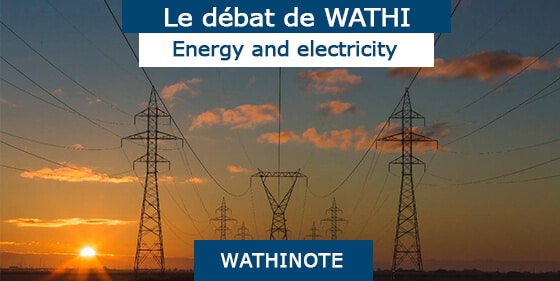

Author : Shingirirai S. Mutanga
Affiliated organization : Africa Institute for South Africa (AISA)
Type of publication : Policy Brief
Date of publication : January 2014
Introduction
In the coming decades, emerging economies are expected to make up the bulk of growth in demand for energy, with countries outside the Organization for Economic Cooperation and Development (OECD) accounting for 83 per cent of expected growth in energy demand between 2008 and 2035. Not surprisingly, the growth in size of emerging economies has been accompanied by a shift in their energy consumption patterns, witnessing a growth in oil consumption by 90 per cent, of natural gas by over 200 per cent, and of coal by 150 per cent. SIDS (small island developing states) such as Mauritius are no exception to this trend.
The recent surge in the area of renewable energy technologies in the face of over-reliance on the declining stock of fossil fuels, together with climate change apprehensions, has for the first time validated the search for alternative sources of energy. No doubt the challenges associated with global environmental change are a cause for concern. Given that climate change is here to stay, yet a reliable supply of energy is a crucial success factor for development, this brief argues that the solution to this paradox lies in the development and deployment of renewable energy.
Mauritius’s energy sector landscape
As in many emerging and developing economies, the energy sector has been identified as a major pace setter for social and economic development in Mauritius. Like other SIDS, Mauritius has limited known exploitable energy sources; hence approximately 83 per cent of its energy is derived from imported fossil fuels in the form of fuel oil, diesel and coal. The principal energy needs include electricity production and transportation, and these are purported to have driven the island’s economic growth. The stability of the energy sector is, however, threatened by the declining stocks of fossil fuels and ever-increasing prices, exacerbated by the current global financial crisis and the high cost of transportation, which makes the importation process very expensive.
Institutional framework
The following section provides a brief overview of the organisational structure of Mauritius’s energy sector. The main stakeholders are the Ministry of Energy, responsible for the regulation of the energy sector, the CEB (Central Electricity Board), which is the national power authority, and the independent power producers or IPPS.
The country’s power plants are owned by either the CEB or the private companies. Approximately 52 MW of Mauritius’s 364 MW installed capacity is installed in independent thermal capacity at sugar estates. The CEB is currently managing power purchase agreements (PPAS) with five IPPs, three of which employ the take-or-pay principle. This means the CEB pays for the contractual energy amount while the power plant is available, even if the energy is not dispatched. The other option for the remaining two is a negotiated part-tariff model which treats capacity and energy charges as two different cost elements. In 2011 the IPPs produced 55 per cent, equivalent to 1 337 GWh, of the total electricity consumption in Mauritius.
Matching the electricity demand with generation capacity forecasts shows that IPPs will still play a major role in the energy sector, providing over 60 per cent of the national demand by 2022.
IPPs have invested in power generation projects for supply of electricity to the national grid. By so doing they have been diversifying their revenue from the sale of electricity to the CEB for onward sale to consumers. In addition co-generation is advantageous in that the sugar factory obtains steam and electricity required for its operation, and in return the power plant obtains the bagasse produced after the milling of canes at no cost.
Policy framework
Central to Mauritius’s energy sector policy framework has been the integrated electricity plan of 2002–2012, followed by the Long Term National Energy strategy plan which supported the national strategies such as the Maurice lle Durable (MID) and the current integrated electricity plan of 2013–2025.
First integrated electricity plan, 2002–2012
The first such plan of 2002–2012 by the CEB was earmarked to provide reliable, affordable and sustainable electricity supply for Mauritius and Rodrigues. This meant providing a stable electricity future to support socioeconomic development. In support of the sugar-sector reform, and with the objective of optimising the use of indigenous energy sources, bagasse for energy generation was a key priority of the plan. Major milestones of this plan included expanding the electricity generation capacity from 237 MW to 664 MW, commissioning 6,3 MW efficient engines, upgrading of the electricity network, and scaling up renewable energy with a 4,8 MW increase in production. Arguably the 4,8 MW has been just too low, in view of the environmental concerns and the national imperative to create a sustainable island.
Matching the electricity demand with generation capacity forecasts shows that IPPs will still play a major role in the energy sector, providing over 60 per cent of the national demand by 2022
Long Term Energy Strategy 2009–2025
The energy policy framework adopted in 2009 underpinned the government’s energy strategy. The framework was based on an emerging economic model, with Mauritius’s main economic pillars being tourism and the restructured sugar industry. Environmental concerns, primarily climate change, have also influenced the policy framework to move towards a low-carbon future, given that energy accounts for 80 per cent of greenhouse gas emissions, hence increasing the island’s vulnerability to climate change. This therefore meant a shift in energy policies and strategies. On the other hand, the viability of the sugar industry was threatened by the declining prices in sugar, which cumulated to 36 per cent, propelling innovation to optimise the use of the island’s once booming economic pillar.
The main objectives of this energy strategy were to reduce the island’s vulnerability to imported fossil fuels and their volatile prices, create employment opportunities and promote economic growth, and safeguard the financial stability of the electricity utility, while providing affordable energy and long-term development in line with the MID.
Considering the world’s move towards a globalised economy, Mauritius had to encourage competition in the energy sector. The government’s strategy avoided a monopolistic situation, while encouraging competitiveness. Operationalisation of the multi-sectoral regulatory authority paved the way for the Electricity Act of 2005, with the latter providing reform, inter alia. Subsequently, the Utility Regulatory Act, promulgated in 2008, became active in 2009. The Long Term Energy Strategy also considered the provision of an energy efficiency act, which brought forth a specialised energy efficiency unit complemented by energy audits to designated consumers/sectors, and promotion of education and training and demand- side management strategies. Other initiatives included the construction of sustainable buildings while promoting energy efficiency in the tourism industry.
The Long Term Energy Strategy also advocated a renewable energy development strategy. Apart from producing sugar, energy generation from bagasse complemented by coal (co-generation) has been a major activity of the sugar industry. The long-term strategy thus fully supported the IPPs’ taking advantage of the historical trend which needed to support the sugar-sector reform.
Integrated Electricity Plan 2013–2022
The CEB has developed yet another IEP with the aim of guiding Mauritius and Rodrigues towards a stable electricity future. The cornerstone of the master plan has been to optimise the use of the existing power system, keep the cost of electricity very low, encourage demand-side management and provide continued private-sector opportunities in the energy sector, as well as taking due cognisance of environmental concerns. Highlights of the IEP reveal that forecasted peak power demand will increase to as high as 574 MW under the base- case scenario and 702 MW under the high-case scenario, implying an annual increase of 14,4 MW for the period 2013–2022.
The main objectives of this energy strategy were to reduce the island’s vulnerability to imported fossil fuels and their volatile prices, create employment opportunities and promote economic growth, and safeguard the financial stability of the electricity utility, while providing affordable energy and long-term development in line with the MID
The IEP also acknowledges the pressures to shift technology in order to diversify primary energy sources with the expectation of benefiting from lower long-run marginal costs, and to promote more environmentally friendly power stations. However, according to the energy mix evolution analysis, renewable energy approaches, in particular bagasse and hydro power, show a declining trend by 2040, except for wind, solar and geothermal strategies.
Notwithstanding the fact that modelling of hydro potential shows that it has reached its limit with an effective total capacity of 55,8 MW, which accounts for 9 per cent of the island’s total effective capacity, this brief argues that the predictions did not fully consider mini- and micro-hydropower plants, which have gained momentum and been helpful in reducing pressure on the main grid. Success story initiatives have been witnessed, and these have been echoed by the World Bank’s new draft energy strategy, which highlights small-scale hydropower as an important component of the future World Bank activities in Africa, the Belgian support for small hydropower developments in Mozambique, and the European Union (EU) support for small regional hydropower development in the Southern African Development Community (SADC) countries.
In addition, the latest IEP acknowledges the fact that renewable energy generation will continue to be more expensive than fossil-fuel based electricity unless environmental costs associated with fossil-based fuel generation are quantified and factored in (which would admittedly be a challenging exercise). Making a policy recommendation based on such an analysis rests on the view that renewable energy is viable, reliable, and ready to go; many of its proponents blame governments for lacking the political will to kick-start an energy revolution.
Conclusion
Mauritius, like many developing and emerging economies, grapples with the challenge of attaining an effective energy mix. The island has witnessed an exponential demand for energy following the re-engineering of the economy, accompanied by the booming tourism and hospitality sector, growing the commercial and manufacturing sector at the expense of sugarcane production, which consequently has an effect on energy production from bagasse. Future projections based on a business-as-usual scenario typify continued use of imported petroleum and fossil fuels rather than the proliferation of renewable technologies. However, Mauritius remains one of the few developing countries to provide an enabling environment and competitive platform to the private sector for investing in the energy sector. Indeed, IPPs have over the last decade been supplying, reliably and competitively, a significant share of the total electricity generated in the island.
Les Wathinotes sont soit des résumés de publications sélectionnées par WATHI, conformes aux résumés originaux, soit des versions modifiées des résumés originaux, soit des extraits choisis par WATHI compte tenu de leur pertinence par rapport au thème du Débat. Lorsque les publications et leurs résumés ne sont disponibles qu’en français ou en anglais, WATHI se charge de la traduction des extraits choisis dans l’autre langue. Toutes les Wathinotes renvoient aux publications originales et intégrales qui ne sont pas hébergées par le site de WATHI, et sont destinées à promouvoir la lecture de ces documents, fruit du travail de recherche d’universitaires et d’experts.
The Wathinotes are either original abstracts of publications selected by WATHI, modified original summaries or publication quotes selected for their relevance for the theme of the Debate. When publications and abstracts are only available either in French or in English, the translation is done by WATHI. All the Wathinotes link to the original and integral publications that are not hosted on the WATHI website. WATHI participates to the promotion of these documents that have been written by university professors and experts.
